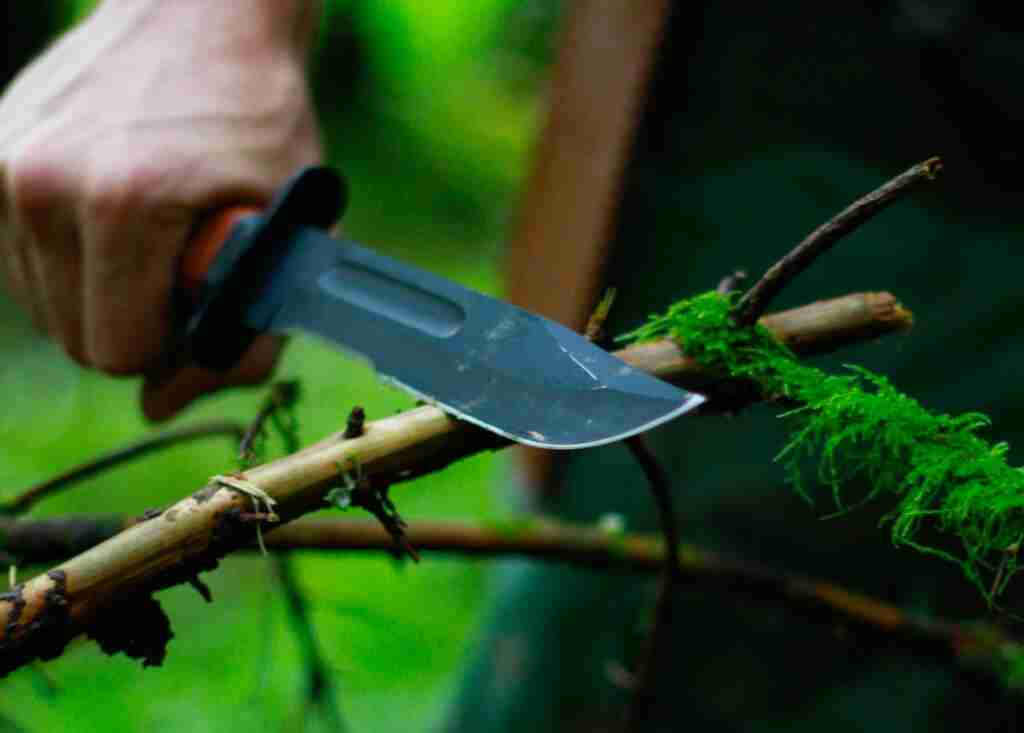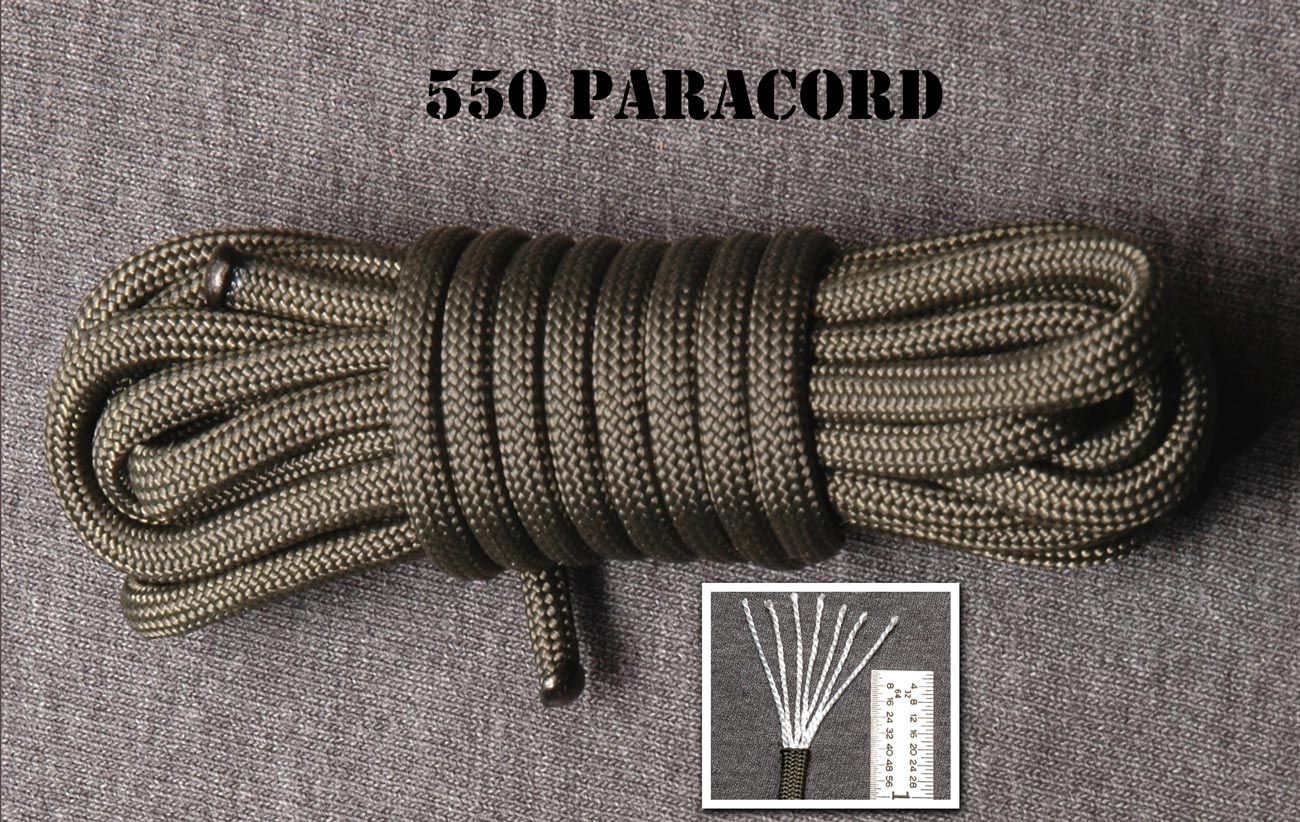Lost hikers die in the wilderness every year. Every year over 2,000 people get lost in the woods; some are rescued; some die. Many of them are hikers who only planned to be gone for a few hours or a day. Even experienced hikers can find themselves lost and disoriented as to their location and direction rather easily, especially if the terrain is heavily wooded and with vague or even non-existent trails. Of course what experienced hikers are likely to have that others may not is a pack with basic survival gear already handy. Always carry basic survival gear with you. We aren’t saying you need to lug 30 pounds of heavy gear with you every time you head out into the woods for a hike, but having at least some of the basics can mean the difference between life and death. Seriously.
The odds are that you will have some water on you if you set off on a hike, but if you get lost you may go through it more quickly than you realize and you will need to find more once you run out. Not only that but you need to make sure it is safe to drink.
The last thing you want is to be lost and suffering from illness from contaminated water or food. This makes having a stainless steel water bottle or container and a proper purification system, water purification tablets, or even a small pot so that you can boil your water in, a vital part of surviving if you happen to find yourself in such a situation.
Don’t use a plastic bottle. It’s lighter, yes, and though you can boil water in a plastic container, it’s not advisable. The water tastes like shit when you boil it in a plastic container anyway.
This is a good start towards survival but you should also have other basic survival gear.
Basic Survival Gear Includes: (in no certain order; except for the knife, that’s your #1 tool)
1) A KNIFE!

NEVER EVER EVER EVER GO ANYWHERE WITHOUT A GOOD QUALITY KNIFE!
A knife is a must-have survival tool! Without a knife you may not survive. It can be used for defense, to cut cord or branches to secure and construct shelter, to help you dig, to mark trees to avoid walking in circles and to give rescue teams clues to your location, clean fish and other game and more. If you don’t have a knife, don’t go in the woods. Period.
Don’t go hiking if you don’t have a good knife. Most people don’t know how important it is to have a good knife. If you get caught out in the wild without a knife, you just reduced your chances of survival drastically if you have to survive for any amount of time before being rescued. You want to increase your odds of survival, not decrease them. Get a knife! Keep it with you at all times.
2) CORDAGE

Paracord is another universal survival tool. You must have cordage, you can use it to secure branches for shelter, help keep your limited food out the reach of predators, as a tourniquet if you get injured, for small snare traps, to help carry supplies you scavenge, to make a sling, to secure a splint, and really more uses than I can list here. Take the time to learn all you can about the uses of paracord in a survival situation.
3) METAL CONTAINER


You need metal container or camping pot to boil water, cook food, you can even bang on it to help signal to rescuers or chase off predators by banging it with a rock and making loud noise. Don’t bring a plastic container. It’s lighter, yes, but it sucks for boiling water.
4) FIRESTARTER

Fire starter, flint/steel, lighter, matches etc. A lighter is great, but sometimes it gets wet, or the flint inside breaks. Never depend on a oil or fuel based firestarter. The fuel is finite and can age. Never depend on a Bic lighter for fire. It’s great to have one, when it works, and most of the time it will work. However, I can’t tell you how many times I’ve been outdoors and my Bic lighter’s tiny little flint came out or crumbled. A Zippo is a beautiful and practical lighter. For home use or lighting cigarettes at the bar. But for survival, in this writers opinion, it’s almost useless for a survival tool because you must also carry fuel an extra flints. This takes up space and adds weight to your pack. Have a ferro rod, magnesium rod or flint and steel. They’re a little harder to use, but they’re light and dependable, even in the coldest and wettest of weather conditions. And that’s when you need them most. Always carry a backup firestarter. Matches which are waterproof and strike anywhere. You know, the white tipped ones. A flint and steel, or ferro rod and striker (you can use the back of your knife). There are quite a few varieties fire starters which will allow you to create sparks to ignite kindling. They are small so there is no excuse not to have one with you on any hike. You must be able to make fire for both signaling for rescue and warmth. If you can’t get warm you run the risk of dying of hypothermia. The weather can change at a moments notice, temperatures could drop and if you’re not ready for it you could die. Hypothermia can kill you in less than an hour of exposure.
5) SHELTER/BLANKET


A “Space blanket”. Again, small, lightweight, but can be used multiple ways and can help save your life. They can even be used as a signal “mirror” due to it’s shiny reflectiveness…and of course to keep you warm at night (or day depending on the weather in your region), to warm you up if you happen to fall in a stream, get caught in rain, etc. Being wet saps your body heat and makes it more likely you will become hypothermic. Get warm and stay warm. A space blanket isn’t ideal, but it’s better than nothing. In a pinch it can serve as a makeshift shelter. A small piece of cordage strung between two trees with the space blanket draped over it can make a good lean-to type shelter, or a frame tent. You’ll have to pile leaves, pine boughs, or other (non poisonous vegetation) on the ground to insulate yourself from the cold ground, but in an emergency situation the space blanket can save your life by keep the snow and rain off of you on a cold night. You might get a little wet, but hopefully you’ve also brought along your firestarter and have a nice fire going. The space blanket will reflect much of the heat from the fire and keep it localized on you.
SURVIVAL TIP: When building a survival fire, build it near the entrance of your shelter (but not too close that you catch your shelter on fire). Build a small wall of rocks behind the fire to act as a heat shield to reflect the heat from the flames back into your shelter. If you’ve also got a space blanket, at the back of your shelter or in an A-frame tent configuration it will catch the heat and create a pocket of hotter air which should keep you warm all night.
6) WATER PURIFICATION

Water purification tablets (and filters) are another small item weighing practically nothing that can be vital to your survival. You can purify water in you metal container. That’s it’s main purpose. You can also purify by boiling water in a plastic water bottle, though I wouldn’t advise it because of fumes and chemicals could leech into the water. They may not make you sick immediately but the science behind long term effects of exposure to the chemicals in plastics is not clear so it’s best to just be safe and not do it unless you absolutely have to.
7) COMPASS


A compass to at least let you know your basic direction. If you know where you started and have some basic ability to read maps, use a compass, etc then this can help you find your way back to civilization. Maybe this should be at the top of the list under KNIFE!, but, technically you don’t “need” a compass if you know how to use other techniques to navigate.
8) FIRST AID KIT

A small first aid kit. You can go with one already assembled or you can make your own but even a store bought one may need some additional items, such as a suture needle, band aids, aspirin, ibuprofen, alcohol pads, 4×4 gauze pads, ace bandage, gauze bandage, cloth tape, blister felt, etc. You can even add some fish hooks, fishing line, waterproof matches etc…in fact, many of the above items are small enough or compact enough that you can probably squeeze them into your first aid kit from the start.
9) MAP

Always carry a map with you of the area you are hiking or hunting. This is kind of a no-brainer, but you would be amazed at the people who go out in the wild for a day hike or even a weekend hike without any kind of map. Topographical maps are really the best maps you can have. A good topo map will show you the lay of the land as well as highways, roads, forest service roads and areas, trails, streams, lakes (water sources) and dangerous terrain like cliffs and steep inclines or scrambles that you could be injured on. Avoid rugged terrain. Don’t go scaling any waterfalls in a survival scenario. Who the hell does that anyway?! Seriously, only an idiot…oh never mind.
Anyway. Point being is a good topo map will save your life in a survival situation. Make sure you get one that’s up to date. You can use older maps of course, but roads could have been washed out or changed, or they not even be there anymore. It’s best to get the latest up to date maps of the area you will be in.
As with our previous articles, this is by no means a complete list of everything that could help you survive if you get lost on hike but this is a good start and having these items/skills will greatly increase your odds of survival while you wait for rescue. These are just the basics.
Keeping calm is another “tool” that you need in these situations. Knowing when to travel(self rescue) and when to stay put and wait for others to find you are important as well, with most hiking scenarios being the latter. You should also tell people when to expect you back so they will know when/if they need to alert authorities that you are missing.
You should also be taking the time to learn how to use your gear before you simply head off with it, get comfortable with it and research the area you plan to hike. Learn what poisonous berries, plants, and mushrooms you may come across so you avoid them and learn what you can eat if you have to.
Carry some high calorie energy/supplement bars so you aren’t forced to put that knowledge to use. With the right gear and knowledge, your odds of surviving increase exponentially.
Don’t become a statistic. Be ready.
If you’re not ready, start preparing now.
Are you ready?

